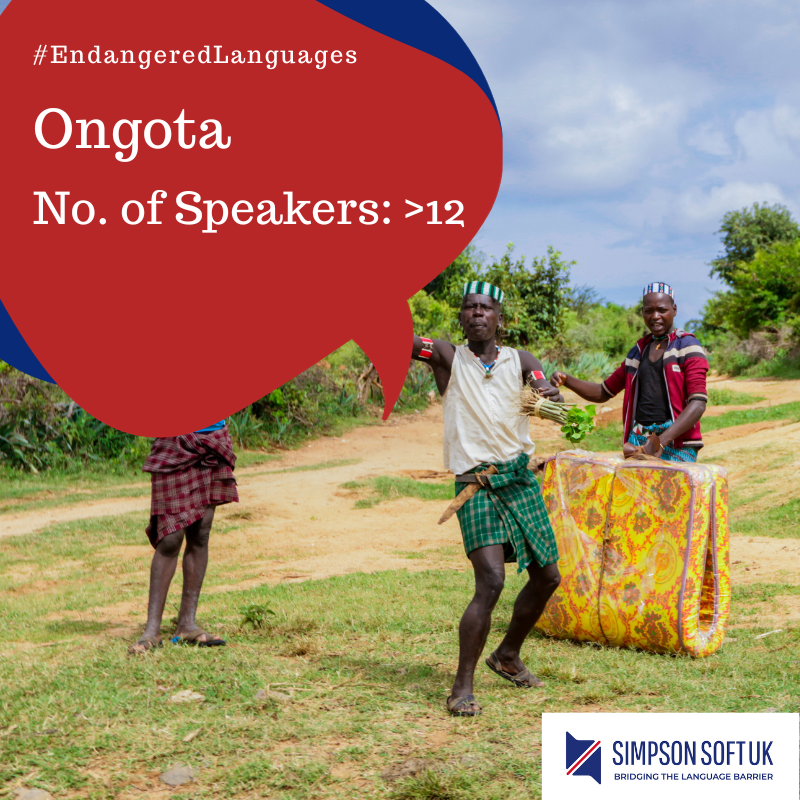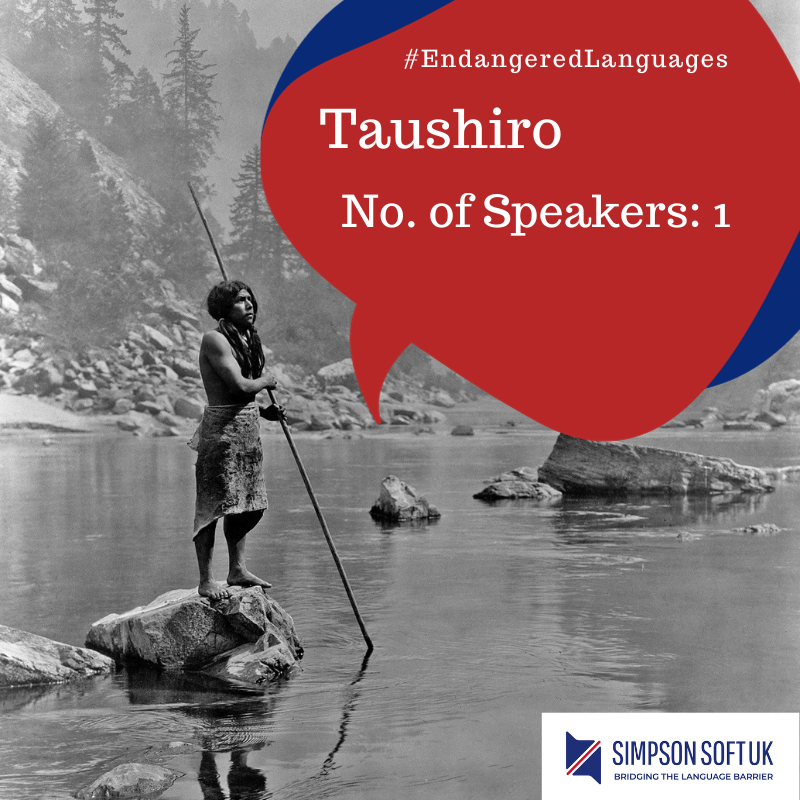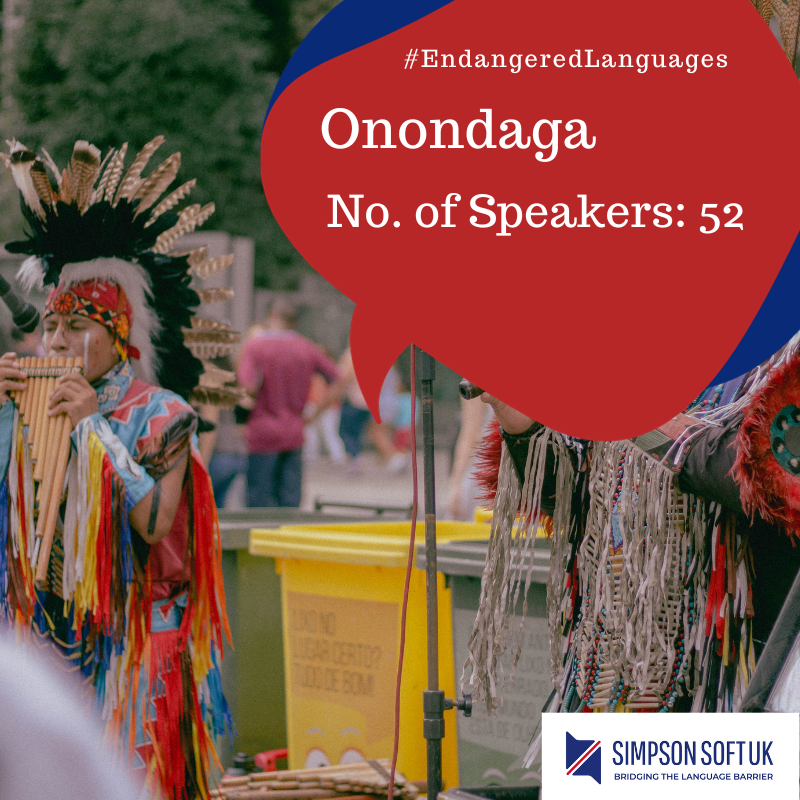Critically Endangered Languages
Languages, in their various forms, dialects and expressions, have held a fascination for language learners and linguaphiles all over the world. The history, the stories, the songs, the culture and the life associated with a language is so much more than alphabets and sounds. Language makes a people.
Our fascination with languages continues as we see new languages evolving and old languages dying every day. The death of a language is sad indeed. More so for many of those ancient native languages, which have no written script. With the death of its people, the tongue of the language is stilled forever. With it dies the memory of a people that loved, laughed and lived.
The extinction of languages is very real according to a UNESCO report, which says that nearly 2,500 languages are in danger of becoming extinct. It is estimated that by the turn of the century, at least 50% of the world’s current spoken languages will be extinct!
With this in mind, we thought it would be a good time to acquaint ourselves with a few languages, which are on the brink of extinction. Here are 5 of them from different parts of the world.
1. Ainu
Origin: Japan
Number of Speakers: Unknown
Ainu is a "language isolate," unrelated to any other language. This makes it impossible to trace exactly where the language originated or where its people came from. The Ainu language has many dialects, but they are so different from each other that a speaker of one of the dialects cannot recognize what a speaker of another dialect says! The few remaining speakers are found in parts of Japan.
It has been classified as a critical endangered language, which means that “The youngest speakers are grandparents and older, and they speak the language partially and infrequently”
There are many efforts being made to revive the language. Recording the Ainu language is part of those efforts.
“According to Masanari Suzuki, a senior specialist for the Japanese language at the Cultural Affairs Agency, since 2015 the agency has been spearheading a project to archive Ainu speech recordings. The project aims to create a repository of materials not only for academic research purposes, but also to build the linguistic infrastructure for people to learn Ainu and pass it down to future generations.”
2. Dumi
Origin: Nepal
Number of Speakers: <8
Dumi is a language spoken in Nepal with less than 8 speakers according to a 2007 study. Wonder how many remain now. It belongs to the Kiranti language family and is spoken more specifically in the area around the Tap and Rawa rivers and in the mountains of Khotong District in Nepal. The pressure to learn Nepali and move to the cities is a primary reason for the decline of the language.
3. Ongota
Origin: Ethiopia
Number of Speakers: 12
Ethiopia has nominated the Ongota oral tradition for inscription on the List of Intangible Cultural Heritage in Need of Urgent Safeguarding. The Ongota oral tradition comprises poems, legends, tales, myths, proverbs and riddles transmitted in the Ongota language, which has no written script. The people are mostly hunter-gatherers and one of the reasons for the decline of the language is a loss of livelihood. With scarce resources left to hunt and gather, the Ongota people have had to migrate and adopt the language and culture of the neighbouring Ts’makko people. The most recent report in 2012 showed that there were only 12 elderly members who remember the language.
4. Taushiro
Origin: Amazon
Number of Speakers: 1
As of 2017, it was known that Amadeo García García is the last surviving speaker of this fascinating language called Taushiro. He was the only one who understood his brother's last words, "Ta va’a ui," which means "I am dying." Ironic that the last words he heard in his language so aptly described the fate of the language as well. Linguists from Peru’s Ministry of Culture are working with Amadeo to save the memory of the language.
5. Onondaga
Origin: New York
Number of Speakers: 12 in the US and 40 in Canada
You don’t have to go out in the sticks to find endangered languages. The Onondaga is a critically endangered language right in the heart of the US of A! The Onondaga people have a rich heritage and follow a traditional form of government, with clan mothers nominating chiefs rather than electing them. Efforts on preservation and revitalization of the language are being carried out by The Onondaga Nation Language Center. The center is called Ne' Eñhadiweñnayeñde'nha', which means "they will get to know the language."
6. Ngan’gikurunggurr
Origin: Australia
Number of Speakers: 26
Ngan’gikurunggurr is a critically endangered, indigenous Australian language. The census of 2016 showed that only 26 home speakers are left. Most of these speakers live in and around the Daly River with around 150-200 people familiar with the language. Ngan'gikurunggurr has two sister dialects, Ngen'giwumirri (about 30 speakers) and Ngan'gimerri (no longer spoken).
Rare Languages and Language Combinations
Here was a line-up of 6 intriguing languages, which are on the list of critically endangered languages. Being in the translation business, we often come across many other languages, which though not critically endangered, are quite rare. Finding translators in these languages and language combinations has been a challenge for many. At Simpson Soft, we make every effort to search out qualified linguists in these rare languages. Some of the rare languages and language combinations include:
Roma Slovak
Romansh
Scottish Gaelic
Jawi
Yiddish
Sylheti
Tetum
Neo Aramaic Chaldean
Neo Aramaic Assyrian
Haitian Creole
Luxembourgish
Dutch to Hindi
Dutch to French
Khmer to French
Apart from these, we provide linguistic solutions in more than 350 languages. We are constantly updating our resource database with qualified linguists from every corner of the world. Get in touch with us if you need translation in these or any other language combinations.







